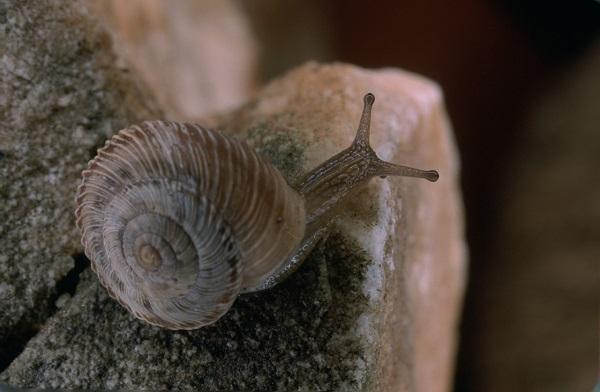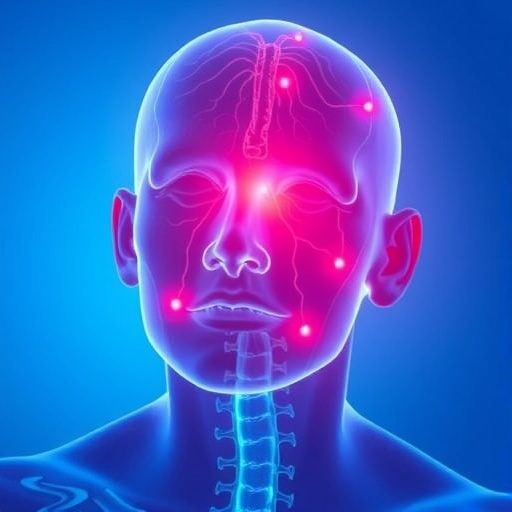The genetic structure of the land snail identified in the late 19th century in the Montserrat mountain

Credit: Vicenç Bros
A study published in the journal Scientific Reports reveals the genetic structure of the land snail Xerocrassa montserratensis and it provides new scientific tools for the improvement of the conservation of this endemic and threatened species in Catalonia. This land mollusc, identified in the late 19th century in the Montserrat mountain, has a reduced geographical distribution limited to the province of Barcelona, and it is a protected species in the area of the natural parks of Montserrat and Sant Llorenç del Munt i l’Obac.
The study is led by the lecturer Marta Pascual, from the Faculty of Biology and the Biodiversity Research Institute of the University of Barcelona (IRBio), and signed by Cristina Català (UB-IRBio), Vicenç Bros (Barcelona Provincial Council), Xavier Castelltort (University of Lleida), and Xavier Santos (Research Center in Biodiversity and Genetic Resources – CIBIO, Portugal). Both the paper and its publication received the collaboration of the team of the Office of the Natural Park of Sant Llorenç del Munt i l’Obac, and the economic support of the Technical Office of the Natural Parks from the Barcelona Provincial Council park network.
An endemic species described more than a hundred years ago in Montserrat
The species Xerocrassa montserratensis –previously named Helix montserratensis–, is a uniqueness of the terrestrial malacological fauna in Catalonia described by Joaquín González Hidalgo in 1870 in the Montserrat mountain. Also, in the late 19th century, Artur Bofill had described two sub-species according to the morphological character of the shell: X. m. betulonensis and X. m. delicatula.
This Catalan endemism, considered to be an excellent model in phylogeographical studies, is found in open spaces of typical bare stony slopes of conglomerate lithology, but not in forestal areas. Surprisingly, the species was detected in areas that had been previously burnt, “which would indicate a high ability to survive or colonize which is not described yet in the scientific literature”, notes the expert Xavier Santos, from CIBIO.
As part of the research study, the team applied the methodology based on the so-called DNA barcoding, which uses a short and standardized fragment of DNA –in this case, the mitochondrial gen Cytochrome Oxidase I (COI)– to facilitate the identification of species and detection of differenced evolutionary groups. This methodology allows researchers to classify most of the species with a high resolution, and in many cases, it provides a great intraspecific variability to detect barriers in the genic flow between populations.
“Since these molluscs have a low mobility, from the from a scientific perspective it was quite interesting to determine whether this endangered species had a populational structure”, reveals Marta Pascual, lecturer at the Department of Genetics, Microbiology and Statistics.
The study enabled the researchers to test the hypothesis from a hundred years ago, which related the population of the mountain chain of Marina –in the Catalan littoral mountain chain– with populations in the upstream waters in the Besòs River.
The team identified genetic groups in areas where different sub-species had been described, a hypothesis that had been under doubts recently by several morphological studies. The results show that the genetically differenced groups are in those populations where the different sub-species had been described more than a century ago. Moreover, researchers also identified a new area where the groups are strongly differenced –Munts, in the Catalan transversal mountain chain–, which should be studied in detail in future studies.
“Our study provides information favouring the validity of these sub-species but we need to advance with the research studies and to conduct morphometric and genomic studies to determine whether there is a reproductive isolation among the different mitochondrial groups”, notes Marta Pascual.
A genetic diversification situation during the Pleistocene
According to the authors, the process of diversification of the genetic groups –combined with the specificity of their natural habitat– could be related to the geological and paleoclimate processes during the Pleistocene, which finally contributed to shaping the current genetic structure of the species. These processes could explain the origins of the vast radiation of species of the gender Xerocrassa in some Mediterranean islands, such as Crete or the Balearic Islands, as stated by the authors.
“It is shocking to find that close populations are that genetically differenced, and at the same time, that a species with such a reduced distribution area can present genetically differenced groups at a mitochondrial level”, notes Xavier Santos.
###
The paper published in Scientific Reports will provide new scientific knowledge to adopt management measures for the conservation of the genetic diversity of the species, now threatened by the impact of the massive human visits, unique habitats in many protected spaces, according to Vicenç Bros, from the Barcelona Provincial Council.
Media Contact
Rosa Martínez
[email protected]
Original Source
https:/
Related Journal Article
http://dx.




